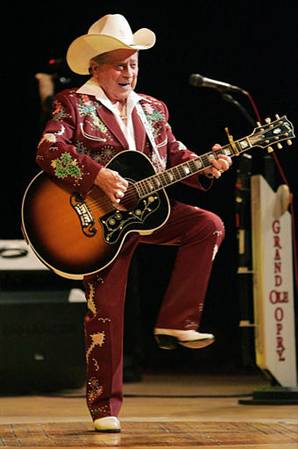
We were going to see a Christian group perform. At a venue with the word “Opry” in the title. In a building that has interior decorations resembling a barn. Where many a-banjos had been strum and acoustic guitars picked. The location being the heart of country music,
In an attempt to brace myself for the ordeal that was sure to occur that Tuesday night, I must have asked my mom at least ten times, “Who are we seeing?” Yet, despite her repetitive attempts, the name of the group would not stick in my head. To this day, I could not tell you who headlined that night.
Nothing could have prepared me for what was in store for us that night at the Grand Ole Opry. After all, I was about to attend a show from the oldest continuous radio program in the
I positively loved the antiquated atmosphere of the venue. It was a Tuesday night, yet it seemed like everybody dressed up, in their Sunday –best, and came out for a night of good music. It truly seemed like everybody attending the show knew one another (they likely were season ticket holders and did know one another), yet we, clear outsiders from
We found our seats in the auditorium, and I was astounded that we were merely 10 rows from the stage, for the low ticket price of about $30. And then the music began. The Christian group came on the stage. Let me tell you, any preconceived notions I had about Christian music were thrown out the window upon hearing these singers. What I experienced was less “Christian” as I would define it, and much more so “Rock.” Following this group were about three or four other acts, all falling under the category of “Country.”
Now I had never liked country music. I am a product of the boy-band era and loved my pop music hand-me-downs like Britney Spears, Smash Mouth, and the such. But my time as the Grand Ole Opry changed that. Although I don’t drink, have never so much as milked a cow, and don’t harbor an undying love for pick-up trucks, this music spoke to me. I loved the blatant honest and in-your-face humor that country music presents.
And as for humor, the night was infused with it. Being that the concert was recorded live and broadcasted over the radio, it was only natural that commercials be included in the program. And the commercials were the funniest, corniest advertisements ever. I am convinced that the products that were being pushed were the same ones that had been advertised the Opry’s entire history. I mean, where else is bar soap, belonging to a company other than Dial, spoken about six times in the courses of two hours? It was hilarious, because, by the end of the show, the announcer that was reading the commercials had to say to the audience, “I know guys, we just need to read this once more,” in reference to the bar soap dialogue.
In retrospect, what is so incredible about the Grand Ole Opry is the history that is engrained in the floorboards and recorded in the microphone of that sacred stage. Those planks have had all the famed country musicians walk across them. That microphone has captured the vocals of everybody who has ever made it big in
My night at the Grand Ole Opry was simply an enjoyable, kick-back-your-heels sort of evening. After that night I began my intense love for country music. A very out-of-place love given I’m a New Yorker. How is that for irony?
Little Jimmy Dickens, beloved member of the Grand Ole Opry for 60 years
Photo from: http://www.morethings.com/music/little_jimmy_dickens/grand_ole_opry-jimmy_dickens.jpg



